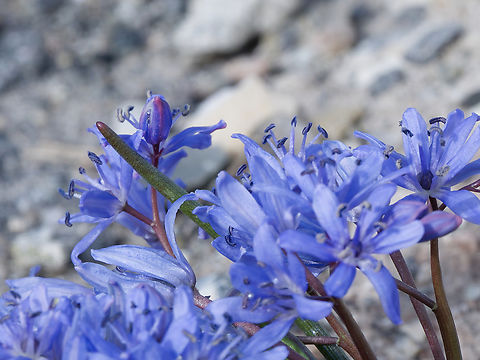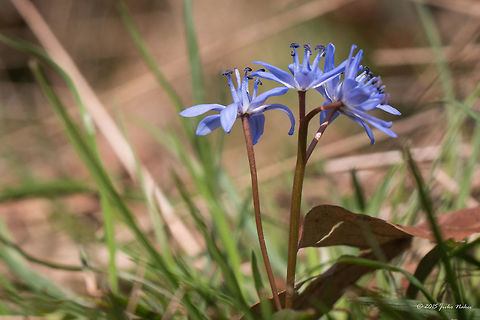
Appearance
"Scilla bifolia" grows from a bulb 1–2 cm across. There are two or rarely three lance-shaped, curved, fleshy and shiny leaves The bases of the leaves clasp up to about the half of the stem.The flowering stems are erect and unbranched, 10–20 cm high. The raceme bears 6-10 flowers, each 1 cm across.
The flowers of "Scilla bifolia" are upward-facing, unlike the nodding flowers of "Scilla siberica". They bloom from early to late spring. The six tepals are deep violet-blue, more rarely white, pink, or purple. The fruit is a capsule 6–8 mm across.
"S. bifolia" has gained the Royal Horticultural Society's Award of Garden Merit.

Naming
*"Scilla bifolia" subsp. "bifolia"⤷ "Scilla bifolia" subsp. "buekkensis" Soó
⤷ "Scilla bifolia" subsp. "rara" Trávníček
⤷ "Scilla bifolia" subsp. "spetana" Trávníček
;Cultivars
The cultivated variety 'Rosea' has pale pink or white flowers.

Distribution
"Scilla bifolia" is native to Europe and western Russia south through Turkey to Syria. The plant is found in shady places, woods of beech or deciduous trees, and mountain grasslands. It grows at an altitude of 100–2,000 m above sea level.References:
Some text fragments are auto parsed from Wikipedia.